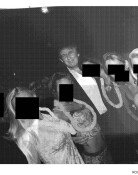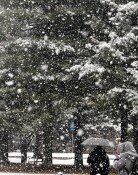Probing defoliant claims
Three retired U.S. military veterans have told an American broadcaster that the U.S. Forces Korea buried 250 drums of defoliant at Camp Carol in the township of Waegwan, where they served. They claimed that in 1978, they were ordered by a commander to dig soil to dispose of a material and buried defoliant accordingly, and that they have since suffered from chronic arthritis, hearing loss and diabetes. After hearing the news, Waegwan residents are fearful over the defoliant. The most urgent task is to trace the exact location of the alleged burial site of the defoliant and check if the veterans claims are true or not.
The government held a contingency meeting Friday and formed a team exclusively for the matter. The U.S. military said it will proactively cooperate if the Korean government requests a joint inspection, but that it has yet to discover any records on defoliant burial. If Seoul fails to promptly and transparently find out whether the toxic chemical was buried there and whether the ecosystem in the area has been polluted, it could induce anti-U.S. sentiment in Korea anew. In light of the importance of the bilateral alliance, Washington must also do what it can to resolve the problem.
Defoliant is an herbicide that the U.S. military sprayed for about 10 years from the early 1960s during the Vietnam War to prevent the emergence of communist militia guerrillas and block military supplies. Defoliant, also known as Agent Orange, contains dioxin, a carcinogen that can cause various types of cancer and paralyze the nervous system. In 1994, the Vietnamese government said more than 2 million war veterans and civilians were suffering from the side effects of Agent Orange. As many as 35,000 Korean war veterans deployed to the Vietnam War are also suffering due to the chemical. According to news reports by American broadcasters, chances are high that the defoliant buried in Waegwan is leftover from the Vietnam War. The American veterans said the drums containing the defoliant had a label reading "Vietnam region, compound Orange and Vietnam in 1967 in orange color, which means defoliant.
Camp Carroll is only 2 kilometers away from the Nakdong River. Surveys have yet to find ingredients of defoliant detected there. Nevertheless, no one can guarantee safety. A close inspection should be conducted in far-reaching areas, including not only inside the U.S. military camp but also areas surrounding it to figure out whether the site is polluted or not. By conducting epidemiological surveys, the government also needs to check the health of residents. If residents are found to have suffered ill effects or environmental damage is detected, the U.S. should take responsibility for treatment, compensation and environmental recovery.





![매일 풀업 60개씩 하는 75세 회장님… “허리 통증도 없어져”[양종구의 100세 시대 건강법]](https://dimg.donga.com/c/138/175/90/1/wps/NEWS/IMAGE/2025/12/13/132956597.1.jpg)

